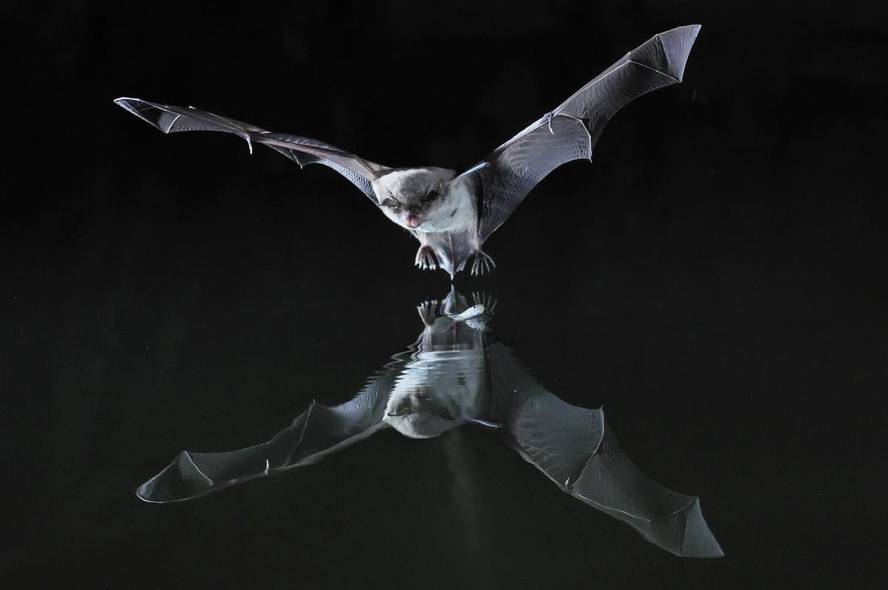The bat dactilar fishing insects and fish
A team of researchers from the UPV-EHU explained how it separates fish from insects from the dactile bat and how it adapts sweep pulses and fishing technique for each type of dam. The work has been published in the journal Scientific Report.
The fingertip bat (Myotis capaccinii) is the only European bat that knows that besides insects, it also feeds on fish. Catch the insects from the surface by a short drag with the feet or with the membrane between the feet (uropatagio). In the case of fish, however, it introduces much more legs and the drag is longer. But in addition, the sweep pattern is also different. The toning of the sweep pulses at the end of the capture phase is known as buzz, and for these bat anglers consists of two parts: Buzza 1 and buzza 2. The long fingers of bats have the ability to modulate the two parts of their ditch, according to their prey. The importance of two buzz in catching insects is similar, but when it comes to capturing the fish it considerably reduces the buzzing 2, arriving in some cases to disappear.
“The use of one or another technique of catching insects and fish indicates that bats are able to separate the two pieces of hunting, and the first step of this research was to understand how this distinction occurs: to know how to identify the prey as fish”, explains Ostaizka Aizpurua, member of the Ecology and Behavioral Evolution Research Group of the UPV/EHU.
The first step in knowing the exact quinada was to know the type of stimulus to which bats respond, for which the researchers of the UPV studied the behavior of bats before three options. Aizpurua explained that “during a quart, we created waves of water without any visible prey. In another case, we put a standing fish immersed in the water, with the upper lip out of the water. The last thing was a fish that ascended and descended, that besides appearing and disappearing produced waves of water”. And they saw that bats only responded to the stimuli in which the prey was visible, ignoring the waves.
In this way we proceeded to analyze the differences between the still fish and the one that appeared and disappeared. “When a fish is standing, it is attacked as if it were an insect, extracting short skin and using buzz 1 and 2 opposite. And when the fish disappears, however, they become deeper and longer roots, and leave the twill to pulses of type 1, as in the case of the fish”, explains Aizpurua.
Finally, in another experiment the fish was submerged at different moments of the hunting action of bats, observing that the pattern of planes and echolocations of bats varied depending on the moment of extinction of the fish. Bats adjust the drag intensity to the dam position uncertainty and adapt it to collect the type of information that interests the sweep pattern. This regulatory behavior can therefore be an important element that makes fishing profitable.






